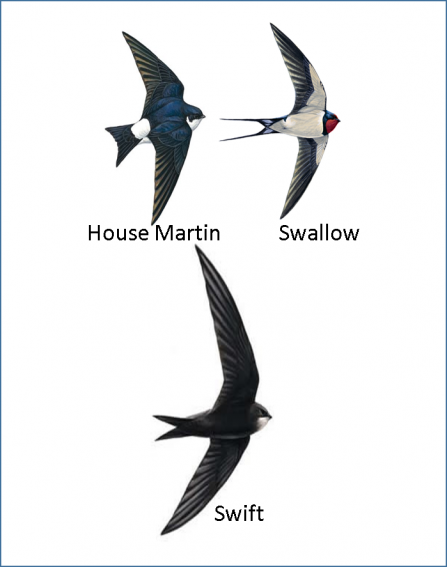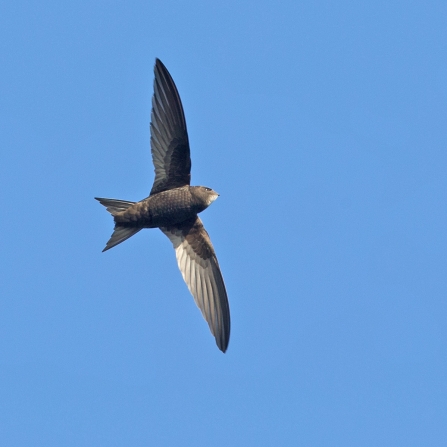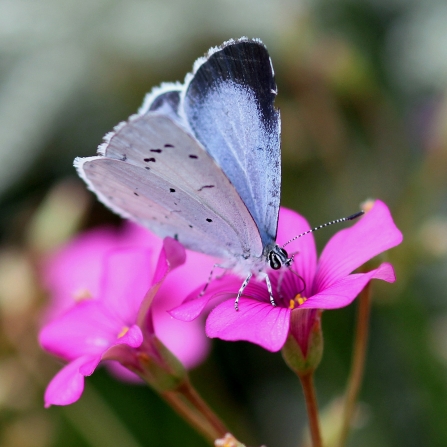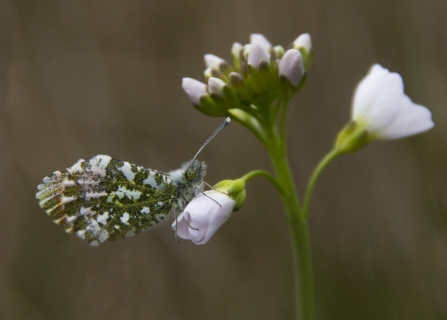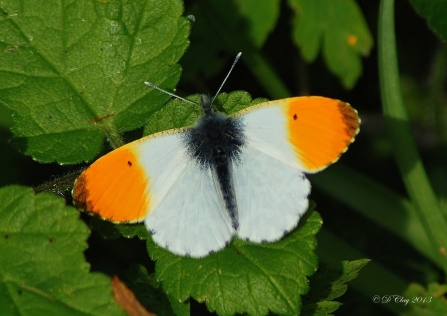Our resident birds have either reared their first broods or set about laying eggs again if they failed. Look out for the recently fledged chicks of robins and blackbirds among others.
In April new migrants arrived and some sang in our gardens as they stopped off to feed. Chiffchaffs were widely reported singing their repetitive ‘chiff chaff’ songs but now most have moved on.
One late arrival back from Africa is the swift which usually appears over our rooftops in early May. Unlike swallows and house martins which are white underneath, swifts are a dull black colour all over. They have long ‘scimitar shaped’ wings which speed them along as they career through the sky. Often they form screaming parties where small groups hurtle about at rooftop height making a distinctive screaming sound....a real indicator that summer has arrived!

